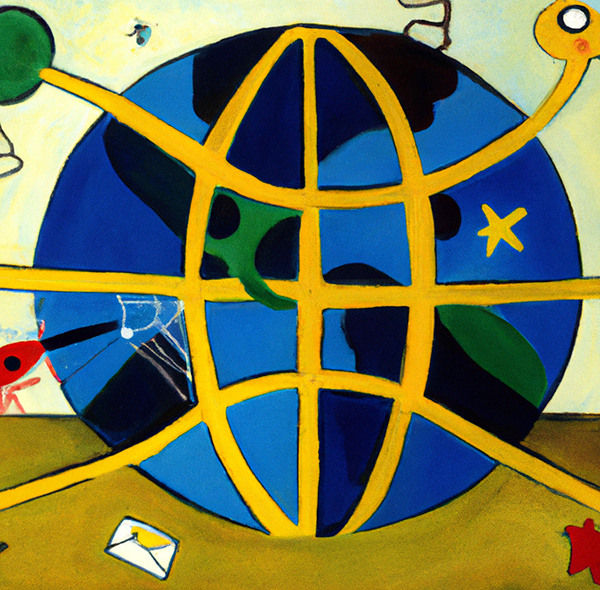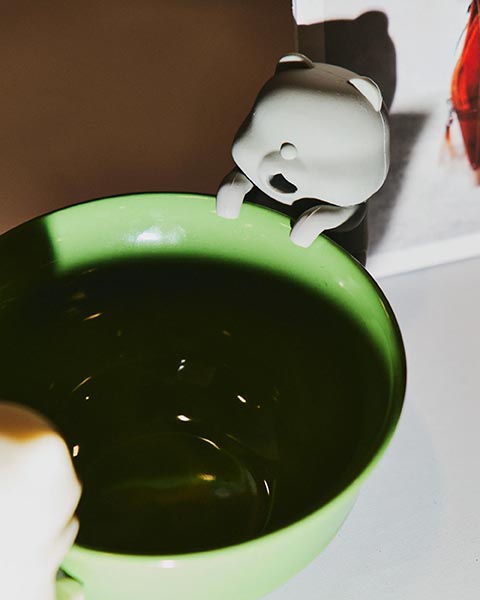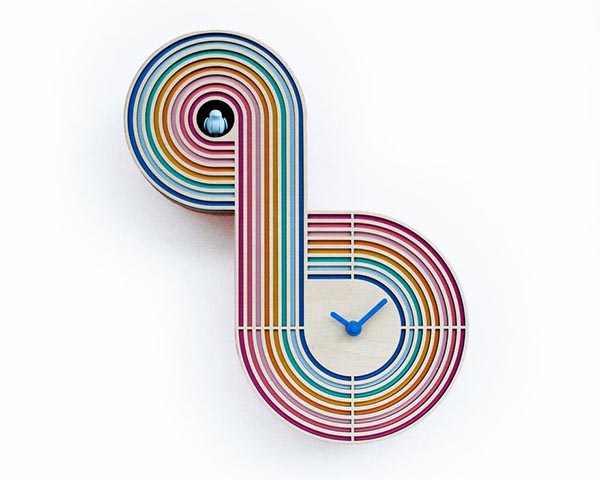
(Optional soundtrack to this week’s Around the Web.)
Resolved
Whenever we are asked, “What’s your New Year’s resolution?” we instinctively reply, “1200 dpi.” The traditional resolutions are of course “exercise more” and “eat healthier,” and it’s right about mid-February that gym crowds start thinning out, which is a useful metric for gauging the length of a New Year’s resolution.
Instead of resolutions, however, Print magazine recommends a New Year’s “Theme Year,” as in, 2025 will be “the Year of the ______.” They explain:
In a Theme Year, you spend the next 365 days guided by an idea.
…For you, maybe this year could be your “Year of Learning.” This would allow you to learn stuff. Maybe it’s a new language. Or a martial art. Or something culinary. Maybe you’ll traipse through some “open courses” on the internet and learn about financial markets or poetry.
Here’s another idea: The “Year of Water.” Sure, it starts with you drinking more water. And maybe replacing every third Diet Mountain Dew with an agua. But Year of Water can also be about spending more time in and near water. Swimming and cold plunges?Maybe a few lunch breaks near a fountain. A vacation near the ocean, river, or a lake. Perhaps you will go to a museum or two in search of water paintings by artists: Monet and Hockney are good folks to start your treasure hunt. You might also begin taking photos of water for your social media and watching water movies (WaterWorld notwithstanding.) The point is, instead of a resolution to “drink more water,” you make water a broader theme for the year.
For Al Stewart, that would be “The Year of the Cat.” For Mel Gibson and Sigourney Weaver, “The Year of Living Dangerously.” Etc.
Also, when you make it a “Year of____,” you needn’t get all worked up on January 1. After all, you have 364 other days to start living out your theme.
So one could easily start on December 31, then. The idea was apparently inspired by David Bowie.
In 1972, he committed to his “Year of Ziggy Stardust.” He literally spent over a year living as a “rockstar from Mars.” I know, cray. But…it was a “themed” year and then some. And when he was finished with Ziggy, he picked another theme for the next years to focus on that being the “Thin White Duke.”
For us, it’s more likely going to be “The Year of Aladdin Sane.”
AI-Yi-Yi, Part the Infinity: Encyclopedia Down
Well, this is upsetting. From Gizmodo:
Once an icon of the 20th century seen as obsolete in the 21st, Encyclopaedia Britannica—now known as just Britannica— is all in on artificial intelligence, and may soon go public at a valuation of nearly $1 billion, according to the New York Times.
The honest-to-goodness encyclopedia was doomed by the advent of both Google and Wikipedia.
While it still offers an online edition of its encyclopedia, as well as the Merriam-Webster dictionary, Britannica’s biggest business today is selling online education software to schools and libraries, the software it hopes to supercharge with AI. That could mean using AI to customize learning plans for individual students. The idea is that students will enjoy learning more when software can help them understand the gaps in their understanding of a topic and stay on it longer.
What could possibly go wrong?
Here Come the Robots!
The Consumer Electronics Show (CES) took place this week, and the various tech sites and publications gleefully highlighted some of the potentially life-changing (in both good and bad ways, no doubt) products on display. One was the robo death vacuum highlighted above, but The Verge and Wired had a variety of roundups. Check out a sampling here, here, and here. Some, uh, highlights:
TomBot Jennie, “a robot emotional lap dog.” That is, presumably an emotional support animal robot, not a robot animal that gets overly emotional. But one never knows.
The Nékojita FuFu, a portable cat-shaped robot that will blow air to cool your hot food or drink so you don’t have to. (Is that an onerous task?) By the way, “neko-jita” is Japanese for “cat tongue,” used in Japan to describe people who can’t tolerate hot food.

(Sorry, just did a spit-take of the coffee we were drinking.)
A robot sloth, for some reason.
Mirumi is a furry little robot that latches onto your purse or backpack strap. It turns its head to look curiously around the room using built-in sensors. But much like an infant, Mirumi is designed to be a bit shy, so it might bury its face if it’s touched or approached by strangers.
And…why?
For the romantic nerds out there, a gold smart ring.
Forget your traditional engagement ring. What about presenting your partner with an 18-karat gold smart ring? Well, Ultrahuman made just that, with its “artisanal” Rare ring, costing $1,900 in gold (or $2,200 in platinum).
Switchbot Multitasking Household Robot K20+ Pro.
The K20+ Pro is a tiny robot vacuum that you can drive like a remote control car. Instead of just cleaning your house, you can endlessly adapt the little robot by adding different kits on its unique mobile platform, which Switchbot calls FusionPlatform. Do you miss your dog when you’re at work? How about tacking a pet camera on top so you can follow him or her around and freak it out? You can put your tablet on a stand so you can watch your yoga videos. Or—just give me a second—a tray table, on top of an air purifier, so you can bring your friends beers while they play video games…
How much of this will ever be commercialized is anyone’s guess, but the fact that people are developing these things suggests we’ve become a society whose basic needs have been met.
Pack It In…a Museum
If you happen to find yourself in Tokyo, be sure to visit the Museum of Package Culture, dedicated to the past, present, and future of packaging. Via Atlas Obscura:
The Museum of Package Culture presents interactive exhibits that appeal to adults and kids of all ages. Displays range from ancient techniques for storing goods, to concept packaging designed for the future. Inside, visitors can explore the evolution of items we rarely give a second thought to such as boxes, cans, and various plastics.


Visit the website (in Japanese) here.
That Type of Year
Print magazine’s 2024 in review looks at the year in typography. What were the typographic trends last year? Some of the items they highlight we have covered here at Around the Web, but some other things worth noting:
Apparently some controversy surrounds a renewed interest in Cursive:
Designers value script and states are reinstating cursive education, yet Gen-Z can’t read it, and brands are straying from it. Chloe Gordon explores.
Although we are very partial to a brewpub in Syracuse, N.Y., called Talking Cursive.
Then there is an interest in “type of feeling”:
The &Walsh team deployed years of experience in brand identity and strategy to craft a collection of typefaces designed to evoke particular moods and sentiments: joy (Jubel), cozy (Conforto), longing (Onsra), and tranquility (Serein), to name a few.
Be sure to check out the full list.
Playing Ketchup
As if “deep fakes” weren’t bad enough, now images of fake foods are starting to proliferate—and it has even spawned a new term. Via Wired, “snackfishing” is the latest online scam, although it seems pretty harmless, if not mildly annoying. It started with a supposedly Australian man posting on social media a video showing what was ostensibly “transparent ketchup.” It went viral on Instagram and everyone assumed it was massively popular because no one could find it on grocery store shelves. Well, there was a simple reason no one could find it: it never existed.
The video was in fact the work of Benji—a 28-year-old armed with an empty bottle, a styling product, and a printer. “It was just hair gel,” the London-based data analyst confesses. (He isn’t actually Australian; that was a voice filter.) “I still feel bad for the people working at Heinz, constantly being asked if clear ketchup is real!”
They probably get AI suggesting that on a regular basis, so they’re used to it.

You’ve heard of a “catfish”—a fake online identity adopted by someone who wants to trick or scam other people. Transparent ketchup was a “snackfish,” and Benji is the UK’s number one snackfisher. Benji’s Instagram account—UK Snack Attack—is home to pistachio-flavored Coco Pops, pickle-shaped Haribo, mint Coca-Cola, ice-cream Pringles, and butter Oreos.
Sometimes we wonder if the Food News section of Food & Wine is snackfishing us.
SWEET On Graphene
Was it a good week for graphene news? It’s always a good week for graphene news! Graphene-based e-textiles for early disease detection. From (who else?) Graphene-Info:
A research team, led by the University of Southampton and UWE Bristol, has developed graphene-based wearable electronic textiles (e-textiles) that are sustainable and biodegradable. In their new study, the team (which also involved the universities of Exeter, Cambridge, Leeds and Bath), describes and tests a new sustainable approach for fully inkjet-printed, eco-friendly e-textiles named ‘Smart, Wearable, and Eco-friendly Electronic Textiles’, or ‘SWEET’.

The team's design has three layers, a sensing layer, a layer to interface with the sensors and a base fabric. It uses a textile called Tencel for the base, which is made from renewable wood and is biodegradable. The active electronics in the design are made from graphene, along with PEDOT: PSS. These conductive materials are precision inkjet-printed onto the fabric.
The next step is to design wearable garments made from SWEET for the healthcare sector, particularly to assist with early detection and prevention of heart-related diseases.
Cloud Cuckooland
Cinephiles may recall the famous speech given by Harry Lime (Orson Welles) in the classic film noir The Third Man:
“In Italy for thirty years under the Borgias, they had warfare, terror, murder, and bloodshed, but they produced Michelangelo, Leonardo da Vinci, and the Renaissance. In Switzerland, they had brotherly love, they had five hundred years of democracy and peace, and what did that produce? The cuckoo clock.”
Never mind that Switzerland didn’t invent the cuckoo clock and never really produced them until recently (they were German, originating, it is believed, in the Black Forest in the 1800s), but it’s still a great line.
The cuckoo clock is still a popular souvenir from Central Europe, but, you gotta admit, it could use a design upgrade.
That said, via Core77, we’re not sure that the new design from Turkiye is the way to go.

By the looks of it, the time is 10 past the 1970s.
The cuckoo bird comes out, chirps, flaps its wings and make the cuckoo sound every hour than goes back inside. Cuckoo count changes regarding time. (For example when it is 11 AM the cuckoo sound counts 11 times.) The clock is silent between 10 PM to 5 AM. (Last cuckoo at 9 PM and First cuckoo at 6 AM.)
In case you were wondering how a cuckoo clock worked.
A steal at $485, if you’re cuckoo enough to pay that for one of those.
Armed and Dangerous?
This is a bit of a misleading headline, from Core 77: “Not Good: Robot Vacuums are Now Growing Arms.” They’re probably not growing them organically, but the idea is a bit unnerving.

I am all for floor-cleaning robots ; they can't do you much harm from down there. But Australian manufacturer Roborock decided to give their Saros Z70 robo-cleaner a freaking five-axis arm and a claw.
The idea is that when it encounters an obstacle blocking its path, it lifts it out of the way to continue cleaning.
Core77 warns:
If you want to prevent the machine from pursuing you, you must erect a barrier larger than a threshold.

The bots are preprogrammed to recognize 108 objects, though there is no indication of what those objects are. Users have the option to program in an additional 50 objects, if they live in complete pigsties. Presumably it also needs to programmed to determine what to do with any of the potential 158 objects—but, honestly, wouldn’t it just be easier to pick up the damn objects oneself?
We have seen the future of horror and it’s this video:
Take it to the Village
What could be harder and more dangerous to ride than a penny-farthing bicycle? Yes, a motorized penny-farthing. Via Laughing Squid, engineer Gregory Mitchell of Gregulations built the Super Farthing, a motorbike that has the structure of a penny-farthing bicycle. Looks terrifying, but we bet Number 6 could easily outrun Rover on one of those.
Way Mo Annoying
Now, granted, we have often been taken on fairly “scenic” routes by cab drivers looking to pad the meter (one advantage of Uber is that it’s a bit more difficult—but not impossible—to do). But we have yet to experience this from a human driver. Via the LA Times:
A Los Angeles man said he nearly missed his flight home after getting trapped on his way to the airport in a Waymo self-driving vehicle that wouldn’t stop making circles in a parking lot.
He called customer service and the rep said to open the Waymo app and she could control the car remotely. (That’s a thing? Yikes. That’s just asking for trouble.)
A Waymo spokesperson wrote in an email to The Times on Sunday that the incident occurred in mid-December and that the rider was delayed by roughly five minutes, then driven to his destination.
Still.
The spokesperson said the software glitch had since been resolved and that Johns was not charged for the ride. The spokesperson added that the company had tried to follow up with him via voicemail.
We’ll stick with Uber.
Bowled Over
Do you like running, biking, and/or walking? Do you like Chipotle Mexican Grill? If yes to both, good news! Chipotle has partnered with Strava—yes, the fitness tracker app—to allow users to win free food by competing in various events. Via (who else?) Food & Wine:
On Thursday, the fast-casual restaurant announced that it's partnering up with Strava once again, this time for the first-ever international Strava segment challenge, which will have participants competing to win free Lifestyle Bowls for a year — and they could even win free Chipotle for their entire city. And in 2025, the challenge will be open to more cities around the globe to get as many people involved as possible.
The competition is open to 25 cities (that is, the top 25 cities that eat the most Chipotle ) in North America and Europe. (Full list at chipotle.com/city-challenge.)
Chipotle and Strava created 25 “Chipotle segments,” which are portions of roads and trails originally mapped by the Strava community. Now through January 31, Strava athletes can compete with one another on the routes for the fastest times on the leaderboard and compete for Local Legend Status (LCL), an award for the individual who completes the segment the most times. Chipotle will then reward the Local Legend in each city with free Lifestyle Bowls for a year.
But wait, there’s more.
Chipotle is also hosting a challenge to help us all get past "Quitters Day," the second Friday of January, which is the statistical date on which most people quit their New Year's resolutions.
Or even their “Year of the _____” theme.
This Week in Printing, Publishing, and Media History
January 6
1838: Alfred Vail demonstrates a telegraph system using dots and dashes (this is the forerunner of Morse code).
1852: French educator, inventor of Braille Louis Braille dies (b. 1809).
1878: American poet and historian Carl Sandburg born.
1912: German geophysicist Alfred Wegener first presents his theory of continental drift. (Afterward, everyone slowly moved away from him.)
1931: Thomas Edison signs his last patent application.
1931: American novelist, playwright, and short story writer E. L. Doctorow born.
1946: Shine on, you crazy diamond: English singer-songwriter and guitarist Syd Barrett born.
2000: Kerplonk! American cartoonist Don Martin dies (b. 1931).
January 7
1706: German publisher Johann Heinrich Zedler born.
1831: German postman and founder of the Universal Postal Union Heinrich von Stephan born.
1873: Hungarian-American film producer and co-founder of Paramount Pictures Adolph Zukor born.
1894: William Kennedy Dickson receives a patent for motion picture film.
1912: American cartoonist Charles Addams born.
1927: The first transatlantic telephone service is established from New York City to London.
January 8
1547: The first Lithuanian-language book, Simple Words of Catechism, is published in Königsberg.
1642: Italian physicist, mathematician, astronomer, and philosopher Galileo Galilei dies (b. 1564).
1775: English printer and type designer John Baskerville dies (b. 1706).
1824: English novelist, playwright, and short story writer Wilkie Collins born.
1862: American publisher and founded of the Doubleday Publishing Company Frank Nelson Doubleday born.
1889: Herman Hollerith is issued US patent #395,791 for the “Art of Applying Statistics”—his punched card calculator.
1904: The Blackstone Library is dedicated, marking the beginning of the Chicago Public Library system.
1935: Elvis Presley born.
1941: English actor, screenwriter, and Monty Python member Graham Chapman born.
1942: English physicist and author Stephen Hawking born.
1947: English singer-songwriter, producer, and actor David Bowie born.
January 9
1606: English printer William Dugard born.
1890: Czech author and playwright Karel Capek born. His play R.U.R. coined the word “robot.”
1944: English guitarist, songwriter, and producer Jimmy Page born.
January 10
1754: English publisher, founder of The Gentleman’s Magazine Edward Cave dies (b. 1691).
1776: Thomas Paine publishes his pamphlet Common Sense.
1927: Fritz Lang’s futuristic film Metropolis is released in Germany.
1990: Time Warner is formed by the merger of Time Inc. and Warner Communications.
2023: English guitarist and songwriter Jeff Beck dies (b. 1944).
January 11
1927: Louis B. Mayer, head of film studio Metro-Goldwyn-Mayer (MGM), announces the creation of the Academy of Motion Picture Arts and Sciences, at a banquet in Los Angeles, California.
1928: English novelist and poet Thomas Hardy dies (b. 1840).
1949: The first “networked” television broadcasts took place as KDKA-TV in Pittsburgh, Pa., goes on the air connecting the east coast and mid-west programming.
1964: Surgeon General of the United States Dr. Luther Terry, M.D., publishes the landmark report Smoking and Health: Report of the Advisory Committee to the Surgeon General of the United States saying that smoking may be hazardous to health, sparking national and worldwide anti-smoking efforts.
1755: General, economist, and politician, 1st United States Secretary of the Treasury, “Ten-Dollar Founding Father” Alexander Hamilton born.
1807: American businessman and philanthropist, founder of Western Union and Cornell University Ezra Cornell born.
January 12
1908: A long-distance radio message is sent from the Eiffel Tower for the first time.
1949: Japanese novelist, short-story writer, and essayist Haruki Murakami born.
1976: English crime novelist, short story writer, and playwright Agatha Christie dies (b. 1890).













